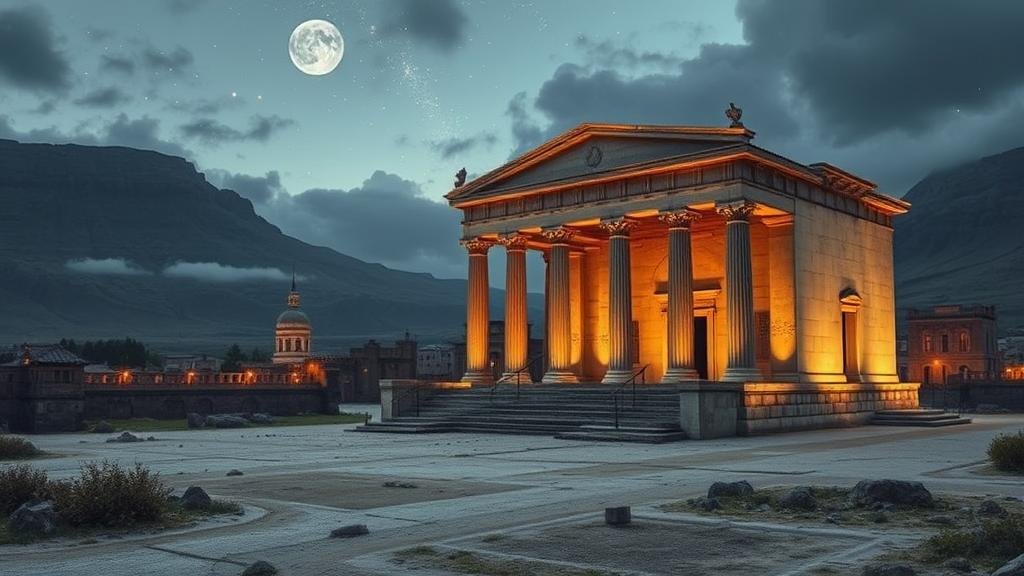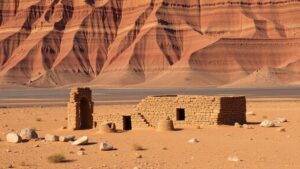The influence of celestial myths on the architecture of lost cities.
The Influence of Celestial Myths on the Architecture of Lost Cities
Throughout history, the celestial heavens have been a source of inspiration and guidance for various civilizations. Many ancient cultures intertwined their mythology with architecture, crafting structures that not only served practical purposes but also honored cosmic deities and celestial alignments. This article delves into how celestial myths have shaped the architectural designs of several lost cities, illustrating the profound connection between the cosmos and human creativity.
The Ancient Maya: Celestial Alignment in Cities
The Maya civilization, which thrived between approximately 250 AD and 900 AD in regions now known as Mexico, Guatemala, Belize, and Honduras, is renowned for its sophisticated understanding of astronomy. Elements of celestial mythology were intricately woven into the construction of their cities, particularly in notable sites like Tikal and Chichen Itza.
At Tikal, the Temple I, also known as Temple of the Great Jaguar, was strategically aligned with the movements of the sun. The spring and autumn equinoxes illuminate its altar, symbolizing the convergence of solar and divine power. Similarly, the Pyramid of Kukulcán at Chichen Itza features a unique architectural phenomenon; during the equinox, a serpent-like shadow slithers down its staircase, embodying the Mayan feathered serpent god, Kukulcán. This attention to celestial events not only showcased advanced astronomical knowledge but also served to reinforce the societal hierarchy, as elites convened for ceremonial activities aligned with these cosmic events.
The Inca Empire: Astronomy and Sacred Geography
The Inca Empire, flourishing in the 15th and 16th centuries in South America, also manifested celestial mythology in its architectural feats, predominantly in Cusco and the sacred city of Machu Picchu. The Incas revered the sun god Inti, believing that the emperor was a direct descendant of this deity. As a result, many structures were built to align with solar events.
- The Temple of the Sun in Cusco is famed for its circular design that symbolizes solar rays radiating from a central point.
- Machu Picchu features the Intihuatana stone, a ritual stone associated with astronomic events, which served as an astronomical observatory and was designed to function as a calendar.
When the sun casts a shadow at certain times of the year, it creates a connection to the divine, suggesting that the landscape itself is imbued with spiritual significance and celestial purpose.
The Ancient Greeks: Mythology Inspiring Urban Planning
In ancient Greece, mythology was pivotal in structuring cities, particularly evident in the architectural marvels of Athens. Parthenon, constructed between 447 and 432 BC, not only represents Doric architectural excellence but is also deeply tied to the mythological landscape of the city. Dedicated to Athena, its orientation towards the sunrise on the summer solstice signifies a celebration of divine favor.
Also, the layout of cities like Delphi, known for the Oracle of Delphi, was influenced by celestial alignments. The monumental Temple of Apollo at Delphi was built to align with the Pleiades constellation, which was significant in Greek mythology. This celestial connection reflects the Greeks attempt to harmonize their urban environments with the cosmos.
Conclusion: A Lasting Legacy
From the Maya and Inca to the ancient Greeks, celestial myths have left an indelible mark on the architecture of lost cities. These ancient civilizations not only aimed to demonstrate their architectural prowess but also sought to connect the earthly realm with celestial divinity, creating structures that served both functional and spiritual purposes.
Understanding these architectural marvels allows us to appreciate the ingenuity and cultural significance of lost cities, which continue to inspire modern architecture. By recognizing the profound influence of the cosmos on human creativity, we gain insights into the values, beliefs, and environments of our ancestors.
As we explore ruins and decipher the legacy of these ancient builders, we are reminded of our own connection to the universe–a timeless bond maintained through celestial observation and mythological storytelling.



